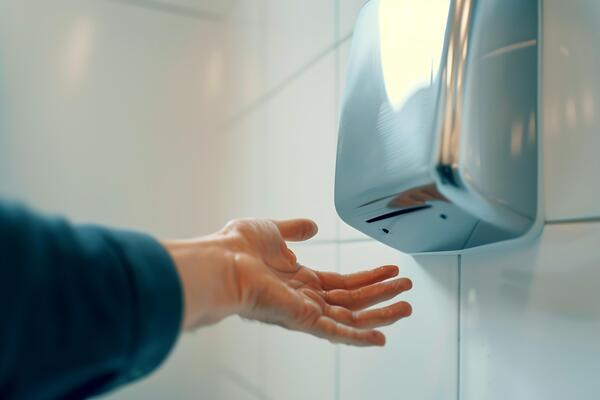In todays world, the focus on sustainability and environmental impact has become increasingly important. One area where this is evident is in the use of automatic hand dryers.
While these devices are often praised for their convenience and hygiene benefits, there is a growing concern about the environmental impact they may have. From energy consumption to waste reduction, the use of automatic hand dryers raises questions about their true eco-friendliness.
This article delves into the various aspects of the environmental impact of using automatic hand dryers, shedding light on the complexities and implications of this widely adopted technology.
1. Introduction to Automatic Hand Dryers

Source: sincovaga.com.br
Automatic hand dryers, a common fixture in public restrooms, have become increasingly popular in recent years due to their convenience and efficiency. These devices offer a quick and hygienic solution for drying hands after washing, eliminating the need for paper towels or cloth towels that can quickly become damp and unsanitary.
With advancements in technology, modern hand dryers are equipped with high-speed motors that can dry hands in a matter of seconds, saving both time and resources. In addition to their practical benefits, automatic hand dryers are also being recognized for their positive impact on the environment, as they can significantly reduce paper waste and the overall carbon footprint associated with paper towel production and disposal.
2. Energy Consumption of Automatic Hand Dryers

Source: cleaneat.ng
The energy consumption of automatic hand dryers has been a topic of debate in recent years, as some studies have shown that they can use up more energy than traditional paper towels. While hand dryers are generally more environmentally friendly than paper towels in terms of waste reduction, the electricity they consume during operation can be significant.
This is especially true for older models of hand dryers that may not be as energy-efficient as newer models. It is important for businesses and facilities to consider the energy consumption of hand dryers when making decisions about their restroom facilities, as switching to more energy-efficient models or implementing other environmentally friendly hand drying options can help reduce overall energy usage and decrease environmental impact.
3. Water Conservation with Automatic Hand Dryers

Source: qz.com
Maximizing water conservation is an essential goal for environmentally conscious businesses, and one effective method is through the utilization of automatic hand dryers. These innovative devices not only eliminate the need for paper towels, which contribute to deforestation and waste, but also significantly reduce water usage in restrooms.
By encouraging patrons to use hand dryers instead of paper towels, businesses can make a positive impact on the environment by conserving water resources. Embracing automatic hand dryers as a sustainable alternative can not only benefit the planet but also enhance the overall eco-friendly image of a business.
Conclusion
In conclusion, the environmental impact of using automatic hand dryers is significant and multifaceted. While hand dryers offer advantages in terms of reducing paper waste and energy consumption, their production and maintenance processes contribute to carbon emissions.
It is essential for businesses and individuals to weigh the benefits and drawbacks of hand dryers when considering their environmental impact. To mitigate negative consequences, a holistic approach that includes proper maintenance, energy-efficient settings, and responsible disposal is crucial.
Ultimately, making informed decisions about hand dryers can help minimize their environmental footprint and contribute to sustainable practices in the long run.














